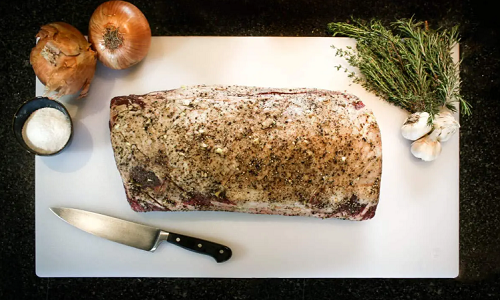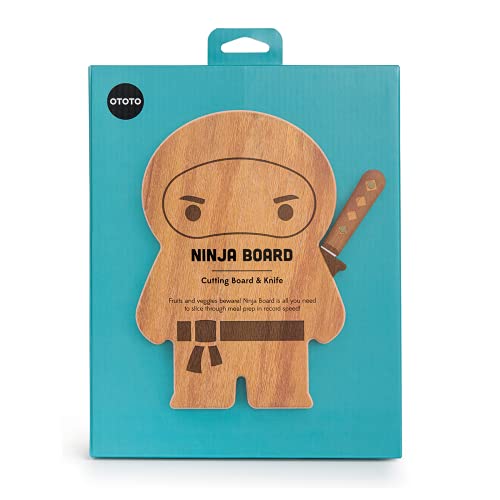Can You Put Hot Food on a Plastic Cutting Board? Expert Opinion
When it comes to food preparation, the choice of cutting board can significantly impact the safety and longevity of your kitchen tools. One common question that arises is whether it’s safe to put hot food on a plastic cutting board.
In this section, we’ll delve into this question and explore the key considerations you should keep in mind.
Can You Put Hot Food on a Plastic Cutting Board?
It is generally safe to place hot food on a plastic cutting board, but there are some precautions you should take:
- Use a high-quality cutting board: Ensure that your plastic cutting board is of good quality and is designed to withstand high temperatures. Cheap or low-quality plastic cutting boards may warp or melt when exposed to hot foods or pans.
- Avoid extreme heat: While plastic cutting boards can withstand moderate heat, it’s best to avoid placing extremely hot pots or pans directly on them. Using a trivet or hot pad underneath the hot cookware is a safer practice.
- Monitor for wear and tear: Over time, plastic cutting boards can develop cuts, grooves, or deep scratches. These imperfections can harbor bacteria and make the board more susceptible to damage from heat. If your plastic cutting board is heavily worn, it’s a good idea to replace it.
- Clean and sanitize: After using a plastic cutting board for hot foods, be sure to clean it thoroughly with hot, soapy water. You can also run it through the dishwasher if it’s dishwasher-safe. Proper cleaning and sanitizing help prevent cross-contamination.
- Consider a separate board: To avoid potential warping or damage to your cutting board, you might consider using a separate, designated board for hot foods and another for cutting and preparing other items. This can extend the life of your plastic cutting board.
Remember that plastic cutting boards have some advantages, such as being dishwasher-safe and less porous than wood, making them less likely to harbor bacteria. However, they can still get scratched and damaged over time, so it’s essential to take proper care of them to ensure their longevity and food safety.
The Basics of Plastic Cutting Boards
Before we address the issue of hot food on plastic cutting boards, let’s briefly review why plastic cutting boards are a popular choice in the first place. Plastic cutting boards have several advantages:
- Ease of Maintenance: Plastic cutting boards are easy to clean and are often dishwasher safe, making them convenient for daily use.
- Cost-Effective: They are generally more affordable than their wooden or bamboo counterparts.
- Variety: Plastic cutting boards come in various sizes, colors, and designs, allowing you to choose one that suits your preferences and needs.
- Hygiene: Contrary to a common misconception, plastic cutting boards can be quite hygienic when properly maintained. They don’t absorb liquids as wooden cutting boards do, which can harbor bacteria.
- Durability: They are relatively durable and less prone to cracking, splitting, or warping compared to wooden boards.
Now, let’s address the question of hot food on plastic cutting boards.
Putting Hot Food on a Plastic Cutting Board: Is It Safe?
Plastic cutting boards are versatile and can handle a wide range of food preparation tasks, including cutting, chopping, and slicing hot or cooked foods. However, there are important considerations to keep in mind to ensure both your safety and the longevity of your cutting board.
1. Temperature Tolerance of Plastic Cutting Boards
The first thing to consider is the temperature tolerance of your plastic cutting board. Most plastic cutting boards are designed to withstand temperatures up to 180-200°F (82-93°C). This means that you can safely place hot, freshly cooked food on them, such as a pan-seared steak or roasted vegetables.
However, it’s essential to be mindful of the temperature of the food you’re placing on the cutting board. Extremely hot items, like items fresh out of the oven or boiling water, can potentially warp or damage the plastic. To be on the safe side, let your food cool slightly before transferring it to the cutting board.
2. Avoid Rapid Temperature Changes
Another important consideration is avoiding rapid temperature changes. Sudden shifts from extreme heat to extreme cold can stress and weaken plastic cutting boards. For example, placing a hot pot or pan directly onto a cold plastic cutting board could lead to warping or cracking.
To prevent this, you can follow a simple rule: allow your cutting board to return to room temperature before exposing it to extreme heat. If you’ve been using your cutting board for slicing hot foods, give it some time to cool down before washing it with cold water or placing it in the refrigerator.
3. Maintenance and Care
Proper maintenance is crucial for prolonging the life of your plastic cutting board. Here are some essential care tips:
- Regular Cleaning: Clean your plastic cutting board thoroughly after each use. Use hot, soapy water and a brush or sponge to remove food particles and stains. If your cutting board is dishwasher-safe, running it through the dishwasher can help sanitize it.
- Avoid Harsh Chemicals: Avoid using harsh chemicals or abrasive cleaners on your plastic cutting board, as they can damage the surface.
- Disinfection: To disinfect your cutting board, you can use a diluted bleach solution (one tablespoon of bleach per gallon of water). Rinse thoroughly afterward.
- Replace When Worn: Plastic cutting boards are not indestructible. Over time, they may develop deep knife marks or grooves that can harbor bacteria. If your cutting board becomes heavily worn, it’s time to replace it.
4. Use Separate Cutting Boards
For optimal food safety, it’s a good practice to use separate cutting boards for different types of foods, especially if you’re dealing with hot and cold items simultaneously. This prevents cross-contamination between raw and cooked foods.
Consider designating specific cutting boards for hot foods and others for raw meats, vegetables, and fruits. This reduces the risk of foodborne illnesses.
Conclusion
In summary, it is generally safe to put hot food on a plastic cutting board, provided you consider the temperature tolerance of the board and take precautions to avoid rapid temperature changes. Plastic cutting boards are versatile and easy to maintain, making them a popular choice in kitchens worldwide.
Remember to clean and care for your plastic cutting board regularly to ensure it remains hygienic and in good condition. Replace it when it becomes heavily worn to maintain the highest level of food safety.
By following these guidelines, you can confidently use your plastic cutting board for a variety of culinary tasks, including handling hot foods, while ensuring both your safety and the longevity of your kitchen tool.



